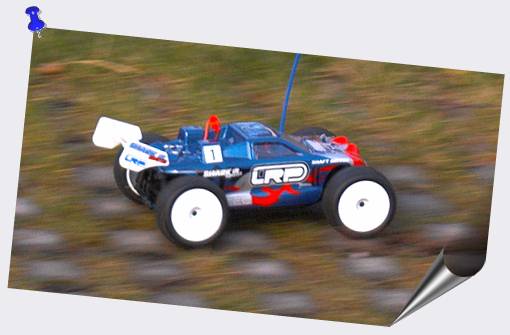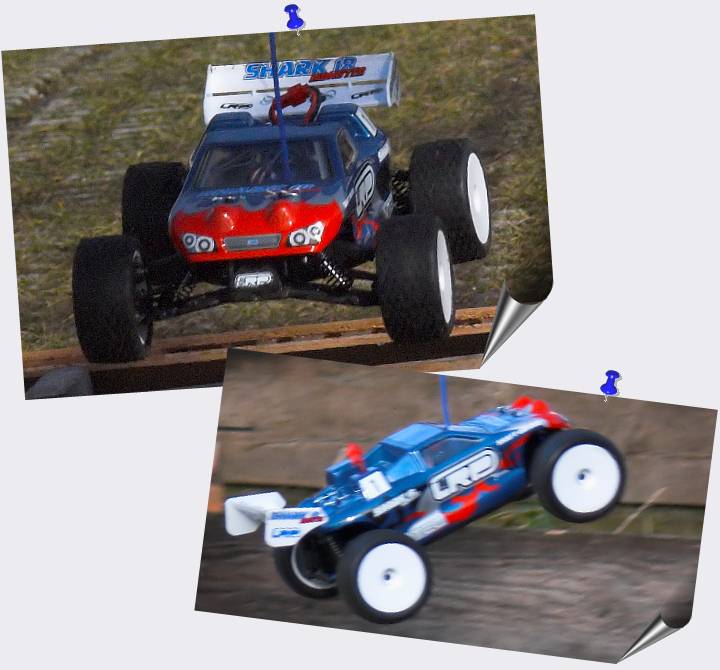|
The sun is shining, the Shark 18 got back its four wheel-drive –
time for the first outdoor session!
The indoor speed is put into perspective when we confront our Shark
18 Monster with a bigger playground: The acceleration of the truggy
is moderate. Not slow, but it cannot be compared to a stock 1/10th
either.
At least my car wasn’t able to reach the sticker-predicted
‘30+km/h’. But I do have to admit that I didn’t do any
tailwind-downhill-slipstreaming for my speed runs …
But, all jokes aside, this speed might be reached on a flat even
surface and with a freshly-charged battery, but the Shark 18 Monster
is an offroader, isnt’ it?
Apart from that the Shark 18 Truggy scores big time with its precise
and swift handling which can largely be accredited to the
well-matched tires. The hard profile can lock itself into thready
ground (short lawn, carpet) while the tire and the foam is soft
enough to give when confronted with harder surfaces.
Together with the kit motor and the quite weak 600mAh battery the
chassis hasn’t reached its limits by far, so there remain lots of
potential for stronger motors and batteries (then the metal
universal shafts should be installed at the latest!)

Off-road – which can easily be short lawn for the Shark 18 Monster –
the suspension works really well. So well that the truggy glides
over most of the bumps instead of lolloping all over the place like
I would have expected.
With regard to the prop shafts the Shark 18 Monster was spared any
"hard" and broken surfaces like dry crackled mud or such.
But we gave our best at testing the flight characteristics. Jumping
and landing the LRP Truggy could be called ‘no worries’ whatsoever.
In the air it can be swiftly controlled by revving up (nose lifts)
or braking (nose dives).
The weight balance between servo plus motor and battery, ESC and
receiver is a bit on the left side, but that doesn’t really matter
in (flight-)practice. Let’s put it this way: Quite a number of
things have to go sour before the Shark 18 Monster has to wave its
PTO-flag.
All in all the performance is impressive and makes you go for more!
For a first step this could be a quicker mini-servo to enhance the
remarkable handling. (the standard servo cranks along quite
unhurriedly) More battery capacity would also be recommended,
especially offroad – because runtime is quite limited with the 600
milliamp-calibre, without even warming motor and ESC too much. With
LRPs VTEC-label you will get up to 1400mAh which will more than
double the runtime.

LRPs Shark 18 Truggy took the test session pretty well, without
really wearing out. There is a little more play in the suspension
but this can be quickly eliminated thanks to the PBS.
The suspension travel-limiters that press onto the chassis from
below did not work out: by and by (and depending on the track) they
are slowly ground away, which leads to differences in suspension
length in case the shocks are mounted to their innermost position.
|